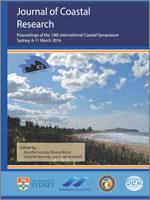Gontz, A.M; McCallum, A.B., Moss, P.T., and Shulmeister, J., 2016. Ground penetrating radar observations of present and former coastal environments, Great Sandy National Park, Queensland, Australia. In: Vila-Concejo, A.; Bruce, E.; Kennedy, D.M., and McCarroll, R.J. (eds.), Proceedings of the 14th International Coastal Symposium (Sydney, Australia). Journal of Coastal Research, Special Issue, No. 75, pp. 730–734. Coconut Creek (Florida), ISSN 0749-0208.
The world's large sand islands and mainland sand masses dominate the coastal system of southeastern Queensland with dunes exceeding 240 m in height. Previous work using sediment cores and TL/OSL dating has estimated the age of the dunes at 730,000 years. This system, the world's largest downdrift sand system, has Fraser Island and the Coolala Sand Mass as the two northern-most members. Combined, these form the Fraser Island UNESCO World Heritage Site and the Great Sandy National Park. Between 2012 and 2015, a series of high-resolution, reconnaissance-level GPR lines were acquired on Fraser Island and on the northern end of the Coolala Sand Mass; totalling over 75 km. The lines provide insight into sea-level fluctuations that drive large-scale coastal evolution and reveal the presence of past shoreline complexes that are proposed to be associated with the mid Holocene highstand and the previous interglacial. The generalized sequence is interpreted as a variable thickness of aeolian sand over beach deposits with a transgressive unconformity at the base of the beach deposits, which is interpreted as the Mid Holocene-to-present system. The Mid Holocene system overlies an older system that has variable preservation and is composed of beach deposits with a transgressive unconformity at the base. In places, portions of the sequence are lightly consolidated with organic material, locally known as “coffee rock”. The coastal sequences hold the potential to host an archive of storm, sea level and sediment supply records over at least two interglacial periods.





